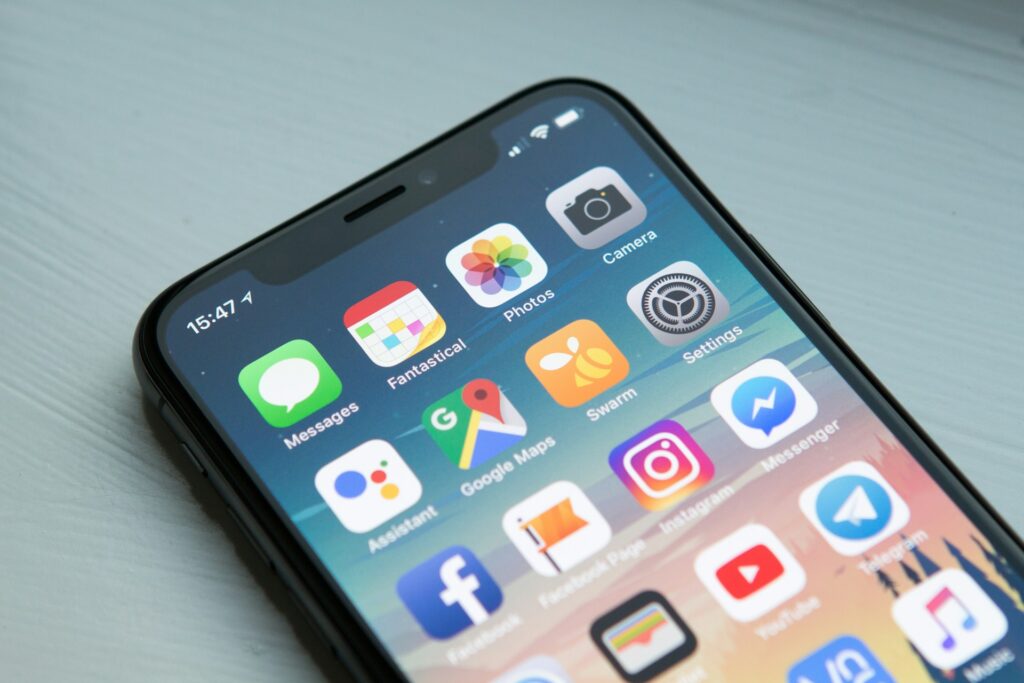In 2023, travel apps were utilized by more than 850 million individuals. Mobile travel apps have completely revolutionized how we plan and experience trips. Therefore, marketing these apps has become essential for their success. From business travelers and adventure seekers alike to holiday goers looking for fun experiences, reaching potential users at just the right moment is critical for your app growth. By using right app marketing strategies, your app will be successful.
Here are seven effective app marketing strategies designed to increase its visibility and engagement!

Photo by William Hook on Unsplash
Seven app marketing strategies for app growth
1. Optimize your app now for success in Q4
In the first quarter of 2025, international tourist arrivals increased by 5% compared to the same period in 2024. This brought the total number of travelers to over 300 million, which is approximately 14 million more than the 285 million who traveled in the first quarter of 2024. This marks a new milestone, as the 2025 figures are now 3% above the pre-pandemic levels of 2019.
To maximize early bird bookings during the New Year period and beyond, one of the critical moments for app optimization lies during quarter 4. Travel apps face stiff competition for user attention at this time, so making this 4th quarter count is crucial when optimizing for early bookings in quarter 1.
To take full advantage of early bookers’ behavior and capture early booking deals on flights and hotels, in Q4, you should focus on app optimization and work on marketing initiatives that will enable you to prepare your app for this flurry of activity. Doing this ensures it captures their attention before the competition comes pouring in later in the quarter.
Assess your app’s performance during this phase by reviewing app performance. Is the user experience seamless, and are there any bug issues that will negatively impact potential travelers from using the app and offering exclusive promotions or deals during this phase to encourage people to download and book early? You can also generate conversions through push notifications alerting users about special limited-time offers for early bird reservations.
Prepping in Q4 means making sure your travel app’s marketing strategy is set in stone, aligning campaigns with current traveler behaviors such as holiday preparation and New Year resolutions for maximum effect. As you plan to utilize mobile OEM advertising, it’s essential to reserve slots in advance to secure prime slots that will get you optimal results.

Photo by JESHOOTS.COM on Unsplash
2. Leverage in-app messaging to drive engagement
Individuals who get messages within apps exhibit engagement levels that are 131% higher compared to those who don’t receive any messages.
In-app messaging can be one of the most efficient ways to engage with users who are already actively using your app by offering them real-time opportunities to communicate directly and contextually with them. Therefore, it is one of the crucial app marketing strategy that marketers should follow. For example, suppose someone searches for flights/hotels at specific locations. In that case, sending a personalized message offering them more details or offers that are specific to their needs can enhance their experience significantly.
Personalized in-app messaging can play an integral part in increasing user retention. Reminding them about unfinished bookings or offering recommendations based on previous searches is just one example of this type of personalized communication that keeps the app on top of their mind. Behavior-triggered messages allow you to deliver relevant content at just the right time for maximum conversion rate success.
3. Design for mobile-first usability
Your travel app needs to be user-friendly on mobile devices, particularly phones. As of July 2023, there are 5.76 billion distinct mobile users, indicating that mobile phones are utilized by over two-thirds of the global population.
Since, most travelers rely on their smartphones when planning, booking, and managing trips. Thus, the design must ensure seamless interactions from start to finish, providing an engaging user experience for users from the moment they open your app.
Focusing on creating an optimal mobile-first experience means simplifying navigation, optimizing load times, and eliminating unnecessary steps from the booking process. Optimizing for various devices and screen sizes ensures users enjoy equal levels of functionality, whether they are using their phones or tablets.
Responsive design goes beyond aesthetics. It should also meet functional needs. Travelers often book trips on their mobile phones. Therefore, your app needs to be intuitive enough that users can locate what they’re searching for quickly, make decisions easily, and complete bookings smoothly with minimal friction.
4. Apply push notifications correctly
Push notifications can be transformative tools in travel apps when used correctly, reminding users about offers, updates, price drops, or limited-time offers (for example, a timely push notification about an exclusive 24-hour sale on flights to their dream destination could prompt them to book).

Photo by Artem Beliaikin on Unsplash
Push notifications must be carefully utilized. On average, a smartphone user in the United States gets 46 push notifications from apps each day. Too many notifications that don’t target user interests could lead to app uninstallations and may annoy people further. To combat this problem, utilize user data by sending tailored messages based on booking history, search activity history, or preferences saved during booking or browsing. The goal should always be providing value rather than overwhelming users with too many notifications.
By crafting concise, engaging, and action-focused messages using push notifications, you can leverage them to evoke urgency among your target users and compel them to act, whether that means finalizing bookings, visiting a new destination, or taking advantage of time-sensitive offers.
Trust in travel apps is critical, especially since customers may make significant financial commitments. One effective way of building trust is by including social proof in your app – such as user testimonials or ratings of accommodations, airlines, or experiences. 92% of customers are reluctant to make a purchase if customer reviews are absent.
Integrating reviews and ratings directly into your app not only fosters trust but can increase user engagement as well. People tend to rely on other people’s experiences when making decisions. Thus, getting and sharing positive reviews may reassure potential customers they made the correct choice.
Consider providing incentives to encourage your users to share their travel experiences through social media and write reviews of trips they have taken. It could increase the app’s visibility while creating a community that helps boost app growth.
6. Influencer marketing to expand reach
69% of customers place their trust in recommendations made by influencers. Influencer marketing has proven an invaluable asset for travel brands. It gives your app greater reach while creating genuine engagement among potential users.
Partnering with influencers who resonate with your target demographic can expand the app’s reach while simultaneously building genuine user connections through Instagram posts, YouTube videos, or TikTok travel guides that showcase it authentically to their followers – giving your app the best chance for growth!
When selecting travel influencers, prioritize those that align with your brand values and have an engaged following in this space. It ensures your message reaches travelers most likely to download and utilize your app.
Leverage the influencers’ access to your app features or exclusive offers by giving them special privileges that they can share with their followers. This way, you’ll build brand recognition while increasing app downloads and reaching wider audiences.
7. Implement loyalty programs to drive user retention
Retaining users is equally as crucial to success with travel apps. Loyalty programs can play an invaluable role in engaging them long after their initial sign-up. 50% of consumers state that their main motivation for enrolling in a loyalty program is to gain rewards on regular purchases. These programs reward your loyal users through points systems, discounts, or exclusive offers in exchange for continued usage of your travel app.
Frequent travelers appreciate rewards that acknowledge their dedication. Consider teaming up with airlines, hotels, and travel services to offer more attractive rewards that resonate with users’ interests. Perhaps offering points per booking that can be redeemed for discounted flights or hotel stays can encourage frequent bookers to return again and again for future bookings through your app.
Successful loyalty programs rely on keeping things straightforward and transparent for users to track rewards, understand redemption processes, and see the advantages of continuing their use of your app.
Conclusion
By following these seven app marketing strategies, travel app marketers can establish stronger bonds with their users and remain top of mind throughout the customer’s journey. From optimizing for Q1 bookings early to taking advantage of social proof and influencer marketing techniques, travel brands can position themselves for success and app growth in today’s highly competitive environment.
Take your travel app to new heights with AVOW’s mobile OEM advertising solutions. Reach a global audience, drive higher engagement, and watch your app thrive in a competitive market. Get started now!
Want to unlock the full blueprint of how to build and market a travel app? Discover all the secrets in our Ultimate Guide to Building and Marketing a Travel App!
About the Author






